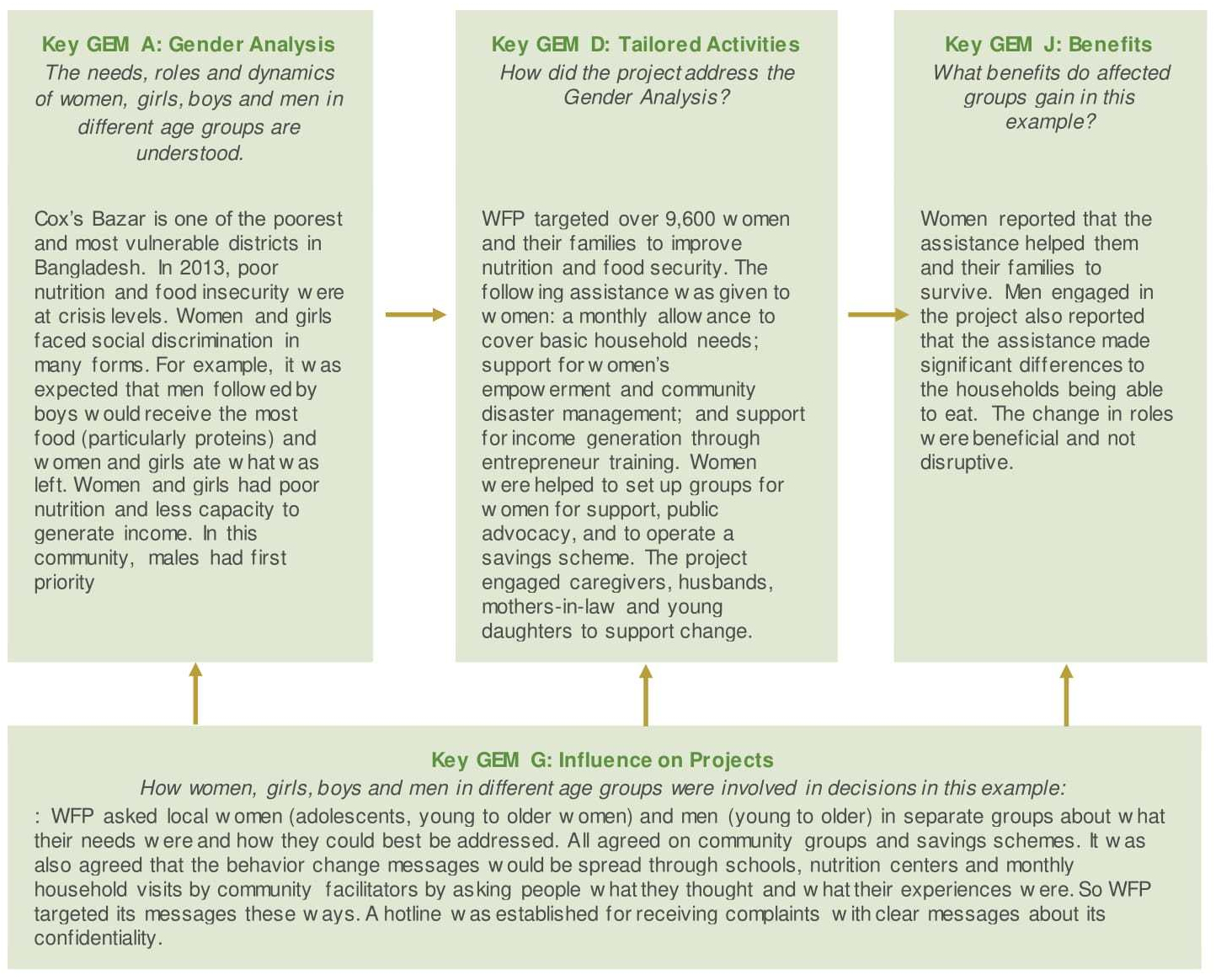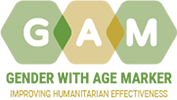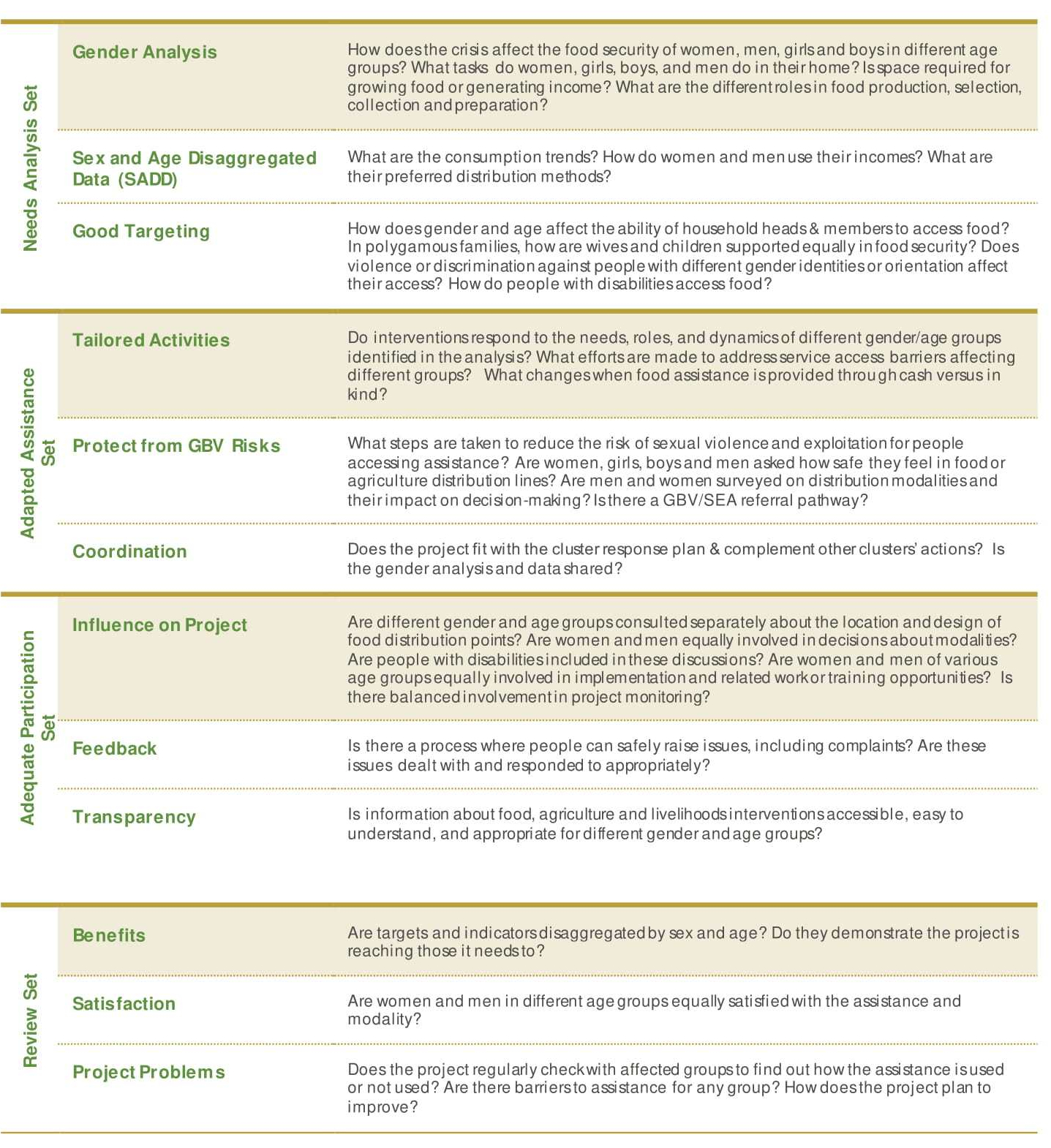Download the Food Security Tip Sheet
This Tip Sheet offers interventions, guiding questions and an example of how 4 Key Gender Equality Measures (GEMs) support gender equality in Food Security projects and programs. It should be read together with the GAM Overview. The IASC GAM identifies and codes projects based on the extent to which key programming elements are consistently present in proposals and implemented projects. Four steps (GEMs) are assessed in the design phase, and twelve GEMs are reviewed in monitoring.
Roles and preferences in producing, providing, preparing, and consuming food can differ depending on gender and age groups. Food insecurity poses different risks for different groups: for example, women, girls or the elderly may eat last and least when food is scarce; inability to secure food may cause men and boys to migrate in search of income.
Food Security interventions can make assistance responsive and fair by:
· Documenting differences in dietary needs, preferences and restrictions; roles and relationships in food, agricultural and livestock production through to consumption;
· Providing food and agriculture packages, cash-based or other assistance tailored to meet the distinct needs of different groups;
· Ensuring women and men (girls and boys as appropriate) have equal say in decisions affecting the project;
· Monitoring whether women and men (boys/girls) receive fair and comparable benefits from interventions in food, agriculture, livestock, fisheries, and/or livelihoods.
Questions to inspire action:
Gender mainstreaming, or a targeted action?
Some Food Security interventions may target actions to address specific discrimination or gaps resulting from gender norms and expectations: these are “targeted actions” (T.) However, the majority of humanitarian interventions will aim to assist everyone in need while considering and adapting activities to meet the distinct priorities and roles of women, men, girls and boys in different age groups: this is gender mainstreaming (M). The GAM Overview explains coding in more detail.
Example of Good Gender Equality Programming in FOOD SECURITY
(GAM Code 4 (T) – can you work out why? See the GAM Overview)

Using Gender Equality Measures in projects or cluster programs leads to better quality programming, responsive to gender and age issues.


